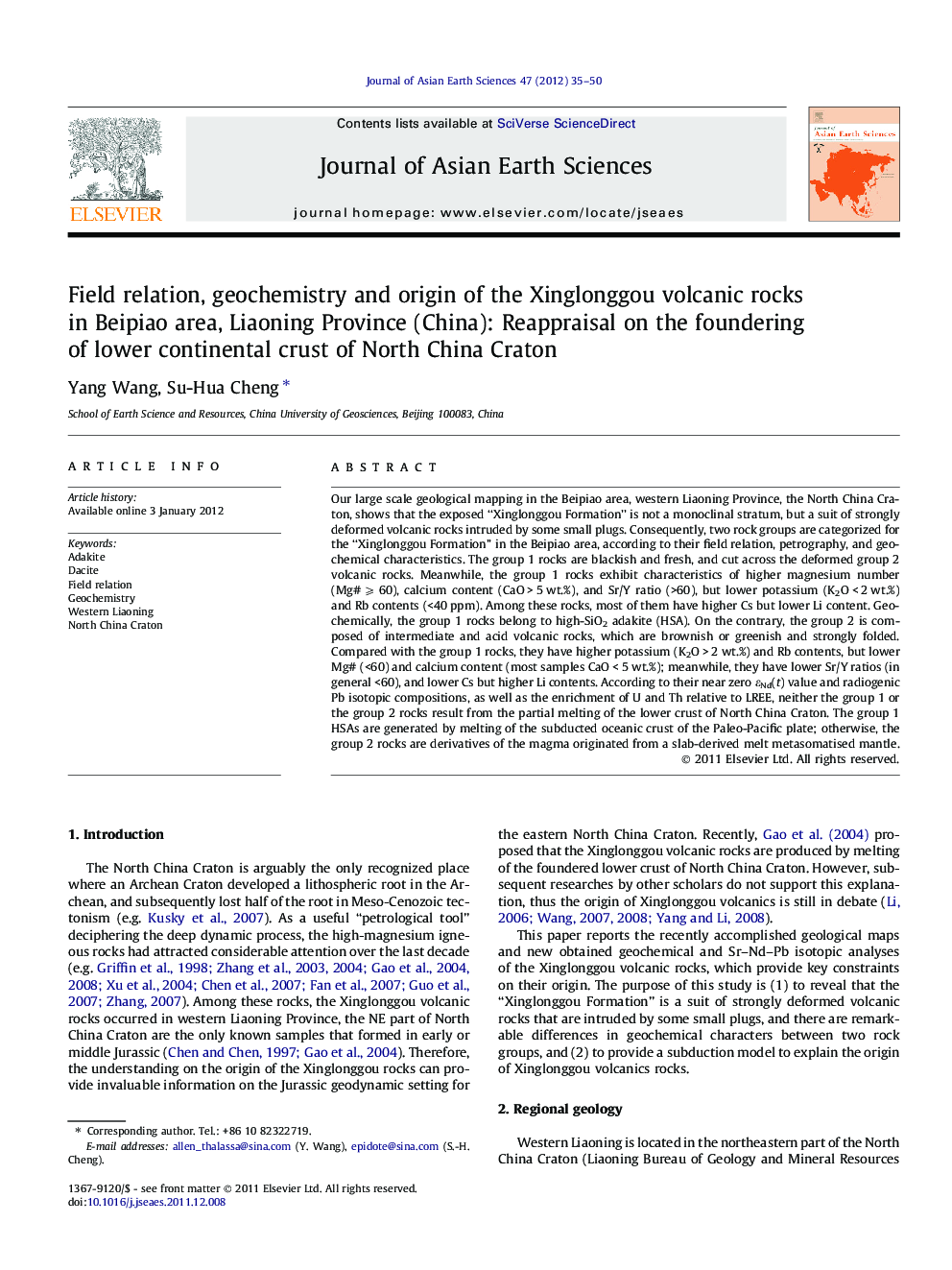| Article ID | Journal | Published Year | Pages | File Type |
|---|---|---|---|---|
| 4731598 | Journal of Asian Earth Sciences | 2012 | 16 Pages |
Our large scale geological mapping in the Beipiao area, western Liaoning Province, the North China Craton, shows that the exposed “Xinglonggou Formation” is not a monoclinal stratum, but a suit of strongly deformed volcanic rocks intruded by some small plugs. Consequently, two rock groups are categorized for the “Xinglonggou Formation” in the Beipiao area, according to their field relation, petrography, and geochemical characteristics. The group 1 rocks are blackish and fresh, and cut across the deformed group 2 volcanic rocks. Meanwhile, the group 1 rocks exhibit characteristics of higher magnesium number (Mg# ⩾ 60), calcium content (CaO > 5 wt.%), and Sr/Y ratio (>60), but lower potassium (K2O < 2 wt.%) and Rb contents (<40 ppm). Among these rocks, most of them have higher Cs but lower Li content. Geochemically, the group 1 rocks belong to high-SiO2 adakite (HSA). On the contrary, the group 2 is composed of intermediate and acid volcanic rocks, which are brownish or greenish and strongly folded. Compared with the group 1 rocks, they have higher potassium (K2O > 2 wt.%) and Rb contents, but lower Mg# (<60) and calcium content (most samples CaO < 5 wt.%); meanwhile, they have lower Sr/Y ratios (in general <60), and lower Cs but higher Li contents. According to their near zero εNd(t) value and radiogenic Pb isotopic compositions, as well as the enrichment of U and Th relative to LREE, neither the group 1 or the group 2 rocks result from the partial melting of the lower crust of North China Craton. The group 1 HSAs are generated by melting of the subducted oceanic crust of the Paleo-Pacific plate; otherwise, the group 2 rocks are derivatives of the magma originated from a slab-derived melt metasomatised mantle.
